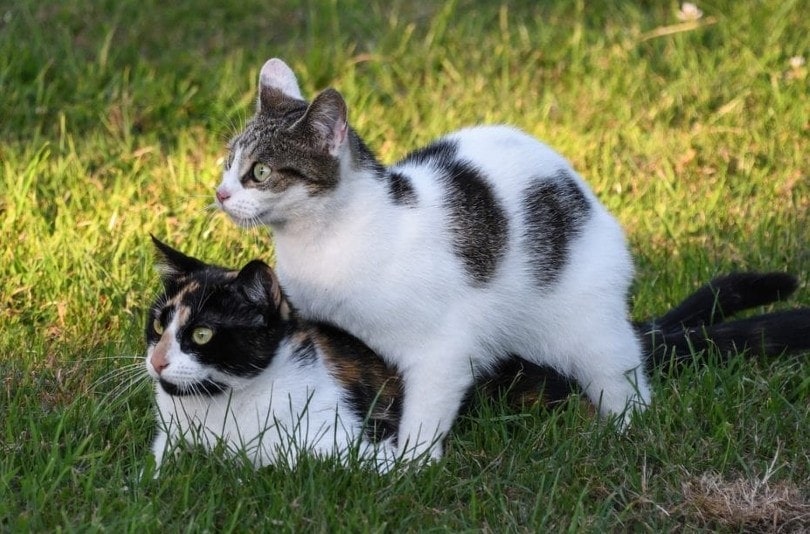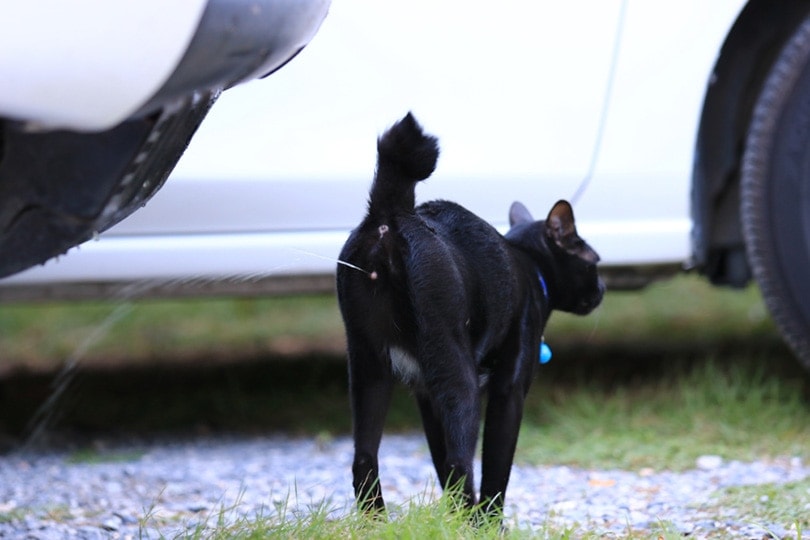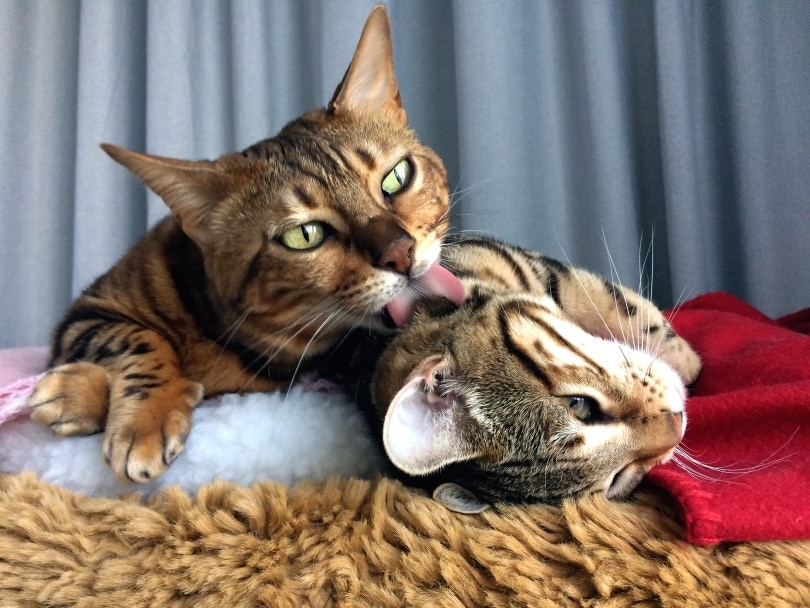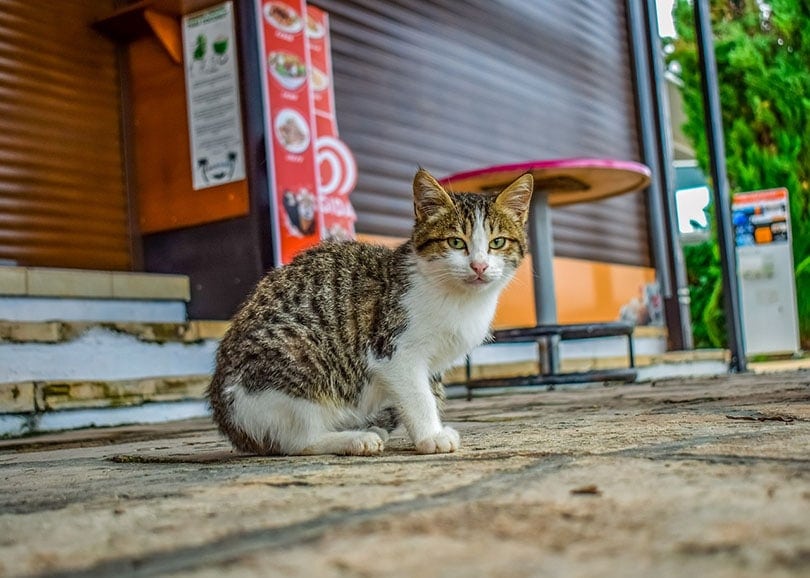When Do Male Cats Become Sexually Active? Vet-Reviewed Feline Reproduction
Updated on

While you may wish your adorable tiny kitten could stay the same age forever, time waits for no cat and they all must grow up at some point. Growing up brings new complications and considerations to everyone, human or feline. When it comes to your male kitten, one big decision you’ll need to make as he grows is whether or not to get your little guy neutered.
There are multiple benefits to neutering your cat that we’ll discuss in detail later in this article. If you decide to neuter your male kitten, however, the best time to do so may be before or just as he is about to become sexually active.
But when do male cats become sexually active? Male cats become sexually active between 4 and 6 months old, usually closer to 6 months, but it could be as long as 9 months. Keep reading to learn how to tell if your male kitten is reaching “that age” and what to do about it when he does.
 The Birds and the Bees: Feline Edition
The Birds and the Bees: Feline Edition
So, what exactly do we mean when we say that a male cat is sexually active? Can a 6-month-old or younger male cat really get a female cat pregnant? Male cats become sexually active when their testicles develop, mature, and begin to produce sperm and testosterone. At this point, you’ll begin to notice physical and behavioral changes (more on these later) in your kitten, letting you know he’s sexually active.
Though they are sexually active, male cats may not reach full sexual maturity, meaning they’re able to get a female pregnant, until any time between 6 and 12 months. So, yes, in theory, your 6-month-old male cat could indeed become a young father. Female cats become sexually active and go into heat around the same time as male cats and they can get pregnant as soon as they do.
If you adopt a male and female kitten of the same age, proceed with caution as they reach 4–6 months old to avoid an accidental “teenage” pregnancy. Even cats who are brother and sister will breed together, so don’t assume you’re safe because your kittens are littermates.

The 5 Signs Your Male Cat Is Sexually Active
As your male cat becomes sexually active, you’ll likely notice one or more physical and behavioral signs of this change.
The 2 Physical Signs
Testicles
The most obvious physical sign you’ll probably notice is the development of easily visible testicles. Male cat testicles should descend in the scrotum and become visible by 2 months of age, but they may not be big enough to become obvious to an untrained eye until they get closer to sexual activity. Still, as cats love to hold their tails high up in the air when they parade in front of you, you should see the two testices clearly.
It’s possible for a male cat to have one or both retained testicles, so don’t rely on this sign alone to let you know your cat is sexually active. To know this, have your cat examined by your vet, or have a gentle feel when your cat is asleep if you know what to look for.
Urine Odor
As your male kitten nears sexual maturity, you may notice his urine begins to smell strong and unpleasant. Unneutered male cat urine has a distinct odor that is not soon forgotten once experienced. And thanks to another sign of sexual activity, urine marking, you might be smelling it quite a lot.

The 3 Behavioral Signs
Urine Marking
As your male cat becomes sexually active, he will instinctively become more territorial. Unfortunately, this means he’ll also feel the need to mark his territory, usually by spraying his suddenly extra smelly urine around his (your) house and yard. Urine marking is one of the most common signs that your male cat is now sexually active.

Changes in Behavior and Aggression Toward Other Male Cats
As their testosterone levels rise, male kittens often experience personality changes. They may be more active and rambunctious and become aggressive toward other male cats they meet. If your previously sweet kitten suddenly begins acting like a moody teenager, he’s probably becoming sexually active.
Mate Seeking
Male cats become very dedicated to the search for a mate as they become sexually active. This usually means they develop such charming habits as prowling around the house, and yowling loudly at all hours of the day and night. You may also find them attempting to sneak or even bolt out of the house regularly. If your male cat lives outside, he may begin fighting with other male cats, which increases their risk of injuries and contracting feline infectious diseases while roaming the neighborhood in search of females.

 Nip It in the Bud: Reasons You Should Consider Neutering
Nip It in the Bud: Reasons You Should Consider Neutering
Unless your cat is purebred and you plan to breed him, neutering before your male is sexually active is usually the best option.
Unneutered male cats are simply not fun to live with, mainly thanks to their urine spraying. Mature, unneutered males also develop large scent glands near their tail base and on their heads that add even more strong odors to the household. Neutering reduces this issue. A neutered male will have zero risk for developing testicular cancer when he gets older, although this is quite rare in male cats.
Outdoors, unneutered cats are at high risk of contracting serious infectious, detrimental, and sometimes even fatal viruses like Feline Immunodeficiency Virus (FIV) or Feline Leukemia Virus (FeLV) from fighting other male cats. Wounds and infections from those fights are also risks. Outdoor cats in general, but especially unneutered males since they are more prone to roaming long distances, are at risk of being hit by cars or hunted by predators like foxes, coyotes, or even neighborhood dogs. In general, cats are safest indoors, but if your male cat must live outdoors, neutering is one way to make it safer for him.
Last but not least, neutering your male cat ensures he won’t contribute to the widespread pet overpopulation issues worldwide. Female cats can have multiple litters per year, and one unneutered male cat can be responsible for an unlimited number of pregnancies.
Neutering your male cat is a responsible and healthy choice both for your cat and the cat population as a whole.
 Final Thoughts
Final Thoughts
You can expect to begin noticing the signs of sexual activity as your male cat nears 4–6 months old. To avoid the more unpleasant parts of life with a male cat, consider getting your cat neutered before he becomes sexually active. About 3.2 million cats wind up in animal shelters across the U.S. every year, and neutering your cat is a small step you can take to help those numbers continue to decrease.
See also:
- Can a Litter of Kittens Have Multiple Fathers? Superfecundation Explained
- Can Cats Be Gay? Behavior, Reasons, & FAQ
Featured Image Credit: Maleo, Shutterstock

 The Birds and the Bees: Feline Edition
The Birds and the Bees: Feline Edition










